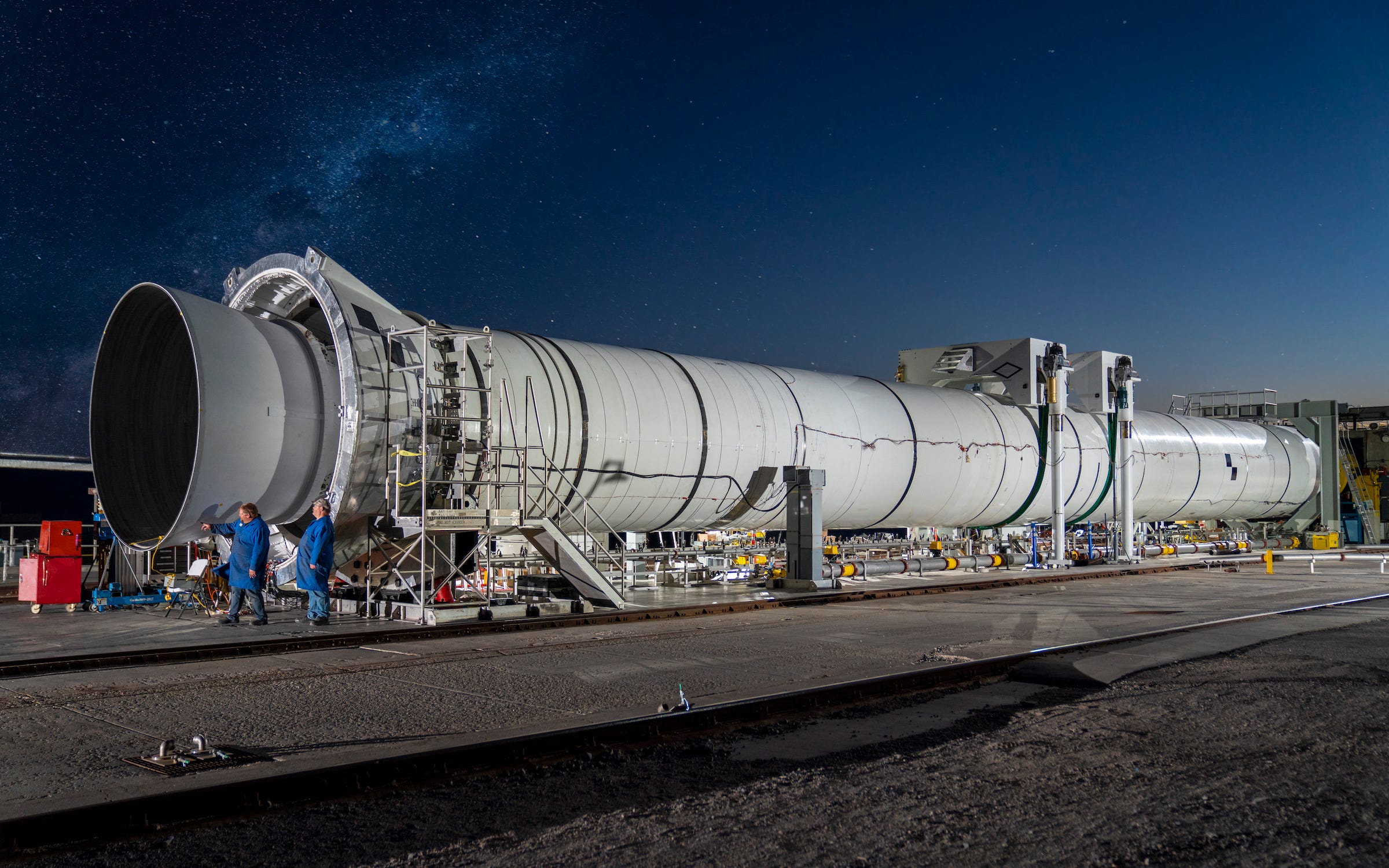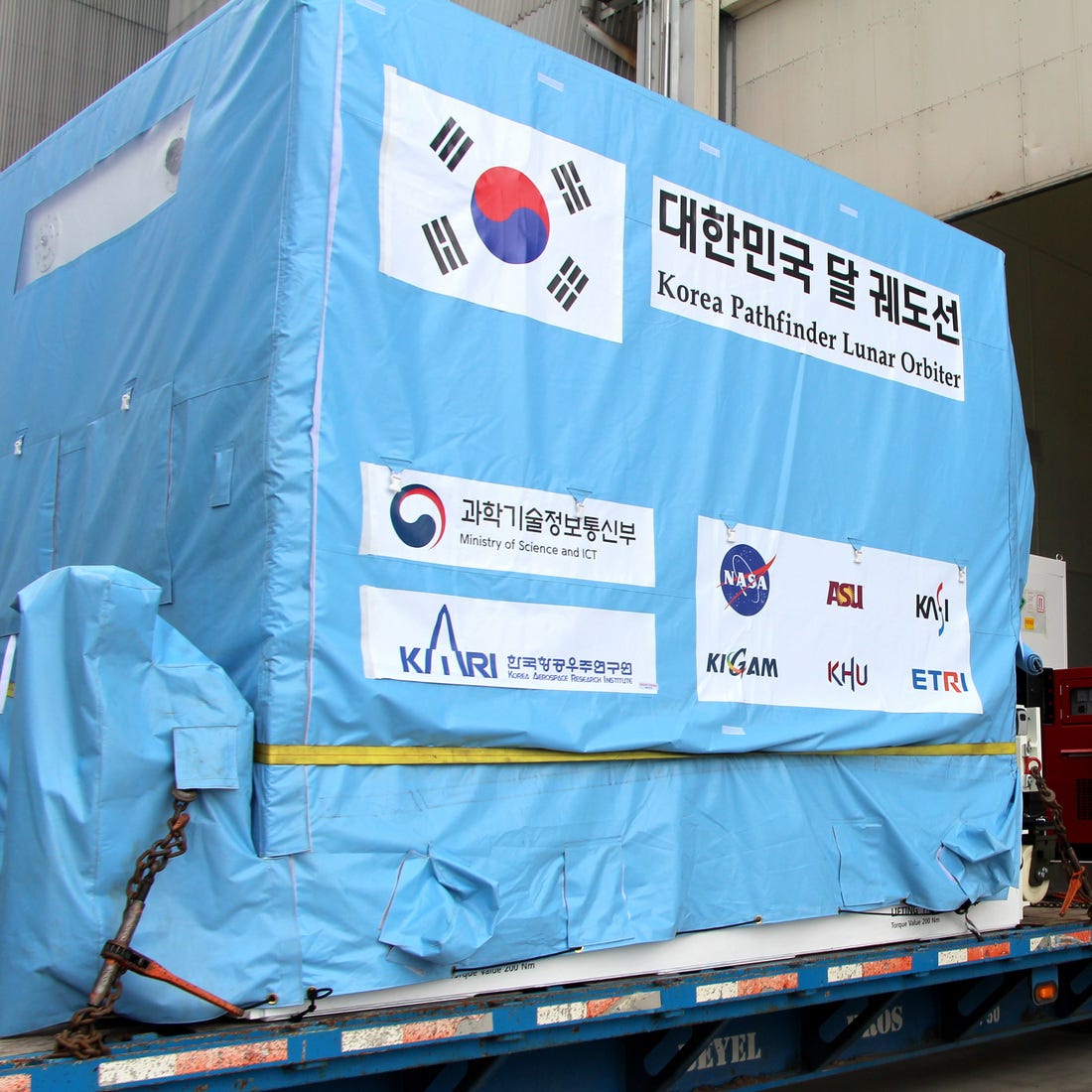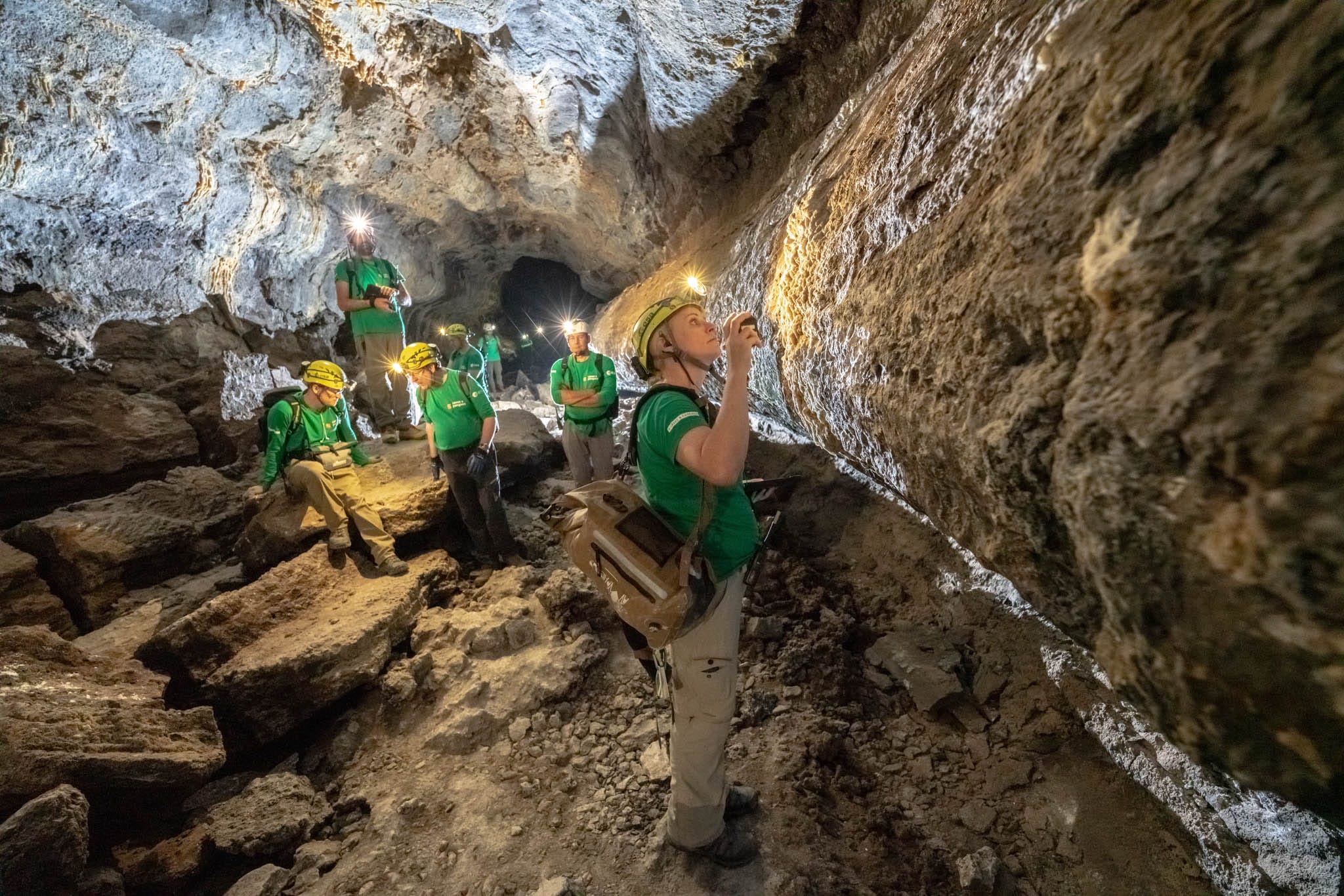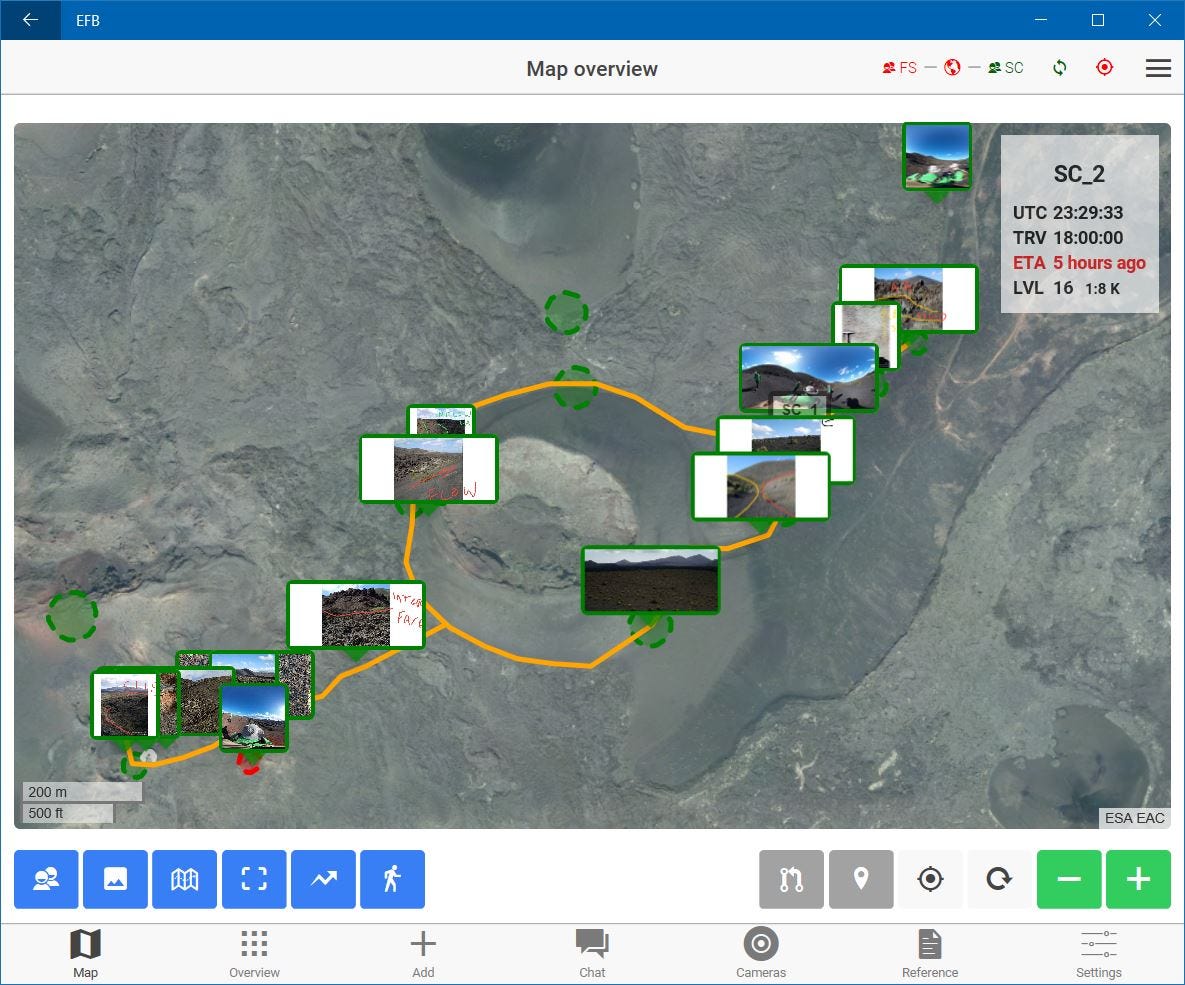Moon Monday #86: New SLS boosters, a Korean Mooncraft, a crusty Pangaea, and more updates
NASA is sticking with the SLS rocket for Artemis IX and beyond
On July 21, NASA and Northrop Grumman will test fire a new, full-scale solid rocket booster as part of an ongoing test campaign to converge on a final booster design for the SLS rocket’s most powerful Block 2 configuration to be used on future Artemis missions starting sometime in the 2030s. The test booster will be fired for approximately two minutes, similar to the time and power level during an actual launch. The SLS rocket’s current twin boosters—based on the Space Shuttle Boosters with an added segment for increased thrust—are mounted on the side of the rocket’s core stage and provide more than 75% of the thrust required during the first two minutes of each flight.

With the Shuttle’s hardware inventory running out, NASA and Northrop Grumman are eyeing the above-mentioned practically new and upgraded boosters to debut on Artemis IX. The mission is also when the Orion spacecraft on top of SLS will feature an upgraded main engine for the second time instead of its current Shuttle-era one. Recall that NASA had awarded a $3.19 billion contract to Northrop Grumman in December 2021 primarily to produce five more booster pairs by end of 2031 for Artemis missions IV–VIII.
While many strongly advocate for the U.S. Congress and NASA to cancel the time- and money-expensive SLS program in favor of commercial alternatives, this booster update is yet another clear sign that the agency is sticking with the big orange rocket. The saying in many cultures along the lines of “accept our demons and live on” seems pretty apt here.
In the meanwhile, NASA has been continuing preparations and testing of the fully stacked SLS rocket for launching the Artemis I mission within two months to send an uncrewed Orion spacecraft around the Moon.
A Mooncraft arrives at the Kennedy Space Center for launch
On July 6, South Korea’s Danuri spacecraft arrived in Florida via air transport, and was then delivered to SpaceX at the Kennedy Space Center. Teams are preparing to integrate the spacecraft with its Falcon 9 rocket for launch on August 2. As South Korea’s first planetary mission, the formally named Korea Pathfinder Lunar Orbiter (KPLO) will show us new views of the Moon’s surface and provide critical information about the lunar polar terrain and its water deposits to help plan future crewed and robotic missions.

Pangaea continues training astronauts in geology
ESA continues the latest round of its Pangaea campaign to train future lunar astronauts in geology, a highly valuable skill in exploring the Moon and collecting samples. Their current participants are European astronaut Andreas Mogensen, European engineer Robin Eccleston and NASA astronaut Kathleen Rubins. They took field trips last year to the Italian Dolomite mountains and the German Ries crater both of which are terrestrial analogues to places on the Moon. Their last visit was to the Spanish volcanic landscapes of Lanzarote, whose now-solidified basaltic lava flows resemble the Moon’s dark volcanic plains.
Mogensen and Rubins are exploring this week the unique geology of Nusfjord in Norway as their last stop. The region has well preserved anorthosite rocks, the kind that makes up bulk of the Moon’s crust. In addition to using orbital images and 3D models to plan their exploratory paths in the region, the astronauts will use spectral images to enhance scientific investigations. Such training will help astronauts better sample the Moon on future missions and return more suitable crustal materials from its highlands, which includes the polar regions. Rubins is part of the Artemis astronauts group, and might be the first woman to land on the Moon. Pangaea’s blog has a nice account on her activities last year.

To aid astronauts during this geology campaign as well as on actual future lunar missions, ESA continues to build the Electronic Field Book, or what I like to call the “Moonwalk tablet”. The astronauts use it to:
- Access geologic maps provided by ESA’s PLANMAP project to plan their exploration routes. PLANMAP combines different data products like imagery, digital terrain models, spectral and chemical information, radar products and more into a comprehensive package.
- Identify minerals and rocks in real-time using thousands of built-in profiles and use that information to collect best samples.
- Record their steps and excursions.
- Communicate with scientists at mission control to integrate their inputs while also integrating data from various cameras and instruments.

ESA aims to get the Moonwalk tablet ready for use by astronauts by 2027, including making it lunar dust- and radiation-tolerant, and capable of surviving extreme temperatures. Its battery should also last more than 8 hours, and it must be ergonomic for astronauts with their bulky spacesuits and gloves to operate.
Thanks to Epsilon3 for sponsoring this week’s Moon Monday.
More Moon
- The Moon samples brought by the Chang’e 5 mission from near a volcanic dome were dated last year by scientists to be 1.96 billion years old. Chinese scientists have now used this precise age to update the crater counting model, which is the basis for determining ages of most features on the Moon. It turns out some lunar features may be as much as 240 million years older than previously thought. The scientific value of the Chang’e 5 samples isn’t limited to the Moon. Scientists will use these newer, more accurate ages of lunar places and regions to calibrate the ages of features on other worlds such as Mars, Mercury, and the icy moons. Chang’e 5 samples are thus helping us refine our understanding of the chain of key events in our Solar System.
- On July 14, Saudi Arabia became the 21st country to sign the Artemis Accords, signaling its commitment to cooperate in space and lunar exploration.
- On July 12, the CAPSTONE spacecraft autonomously executed its second trajectory correction maneuver for the scheduled 53 seconds to stay on the path to the Moon. The next maneuver is in late July.
- The International Moon Day will be celebrated all around the world this July 20th. If you don’t have humans celebrating nearby, maybe host a small one of your own to get people excited about our Moon? Perhaps my curated Moon page can be of help—I’ve handpicked resources and wrote accessible stories over the past three years to get people with no space background on the Moon exploration bandwagon.
→ Browse the Blog | About | Donate ♡
